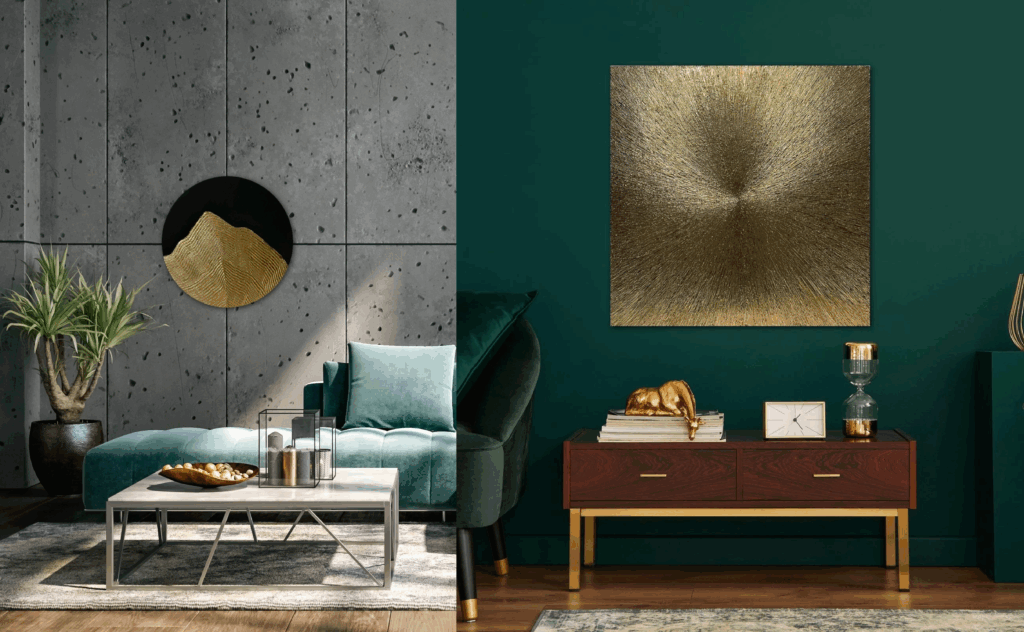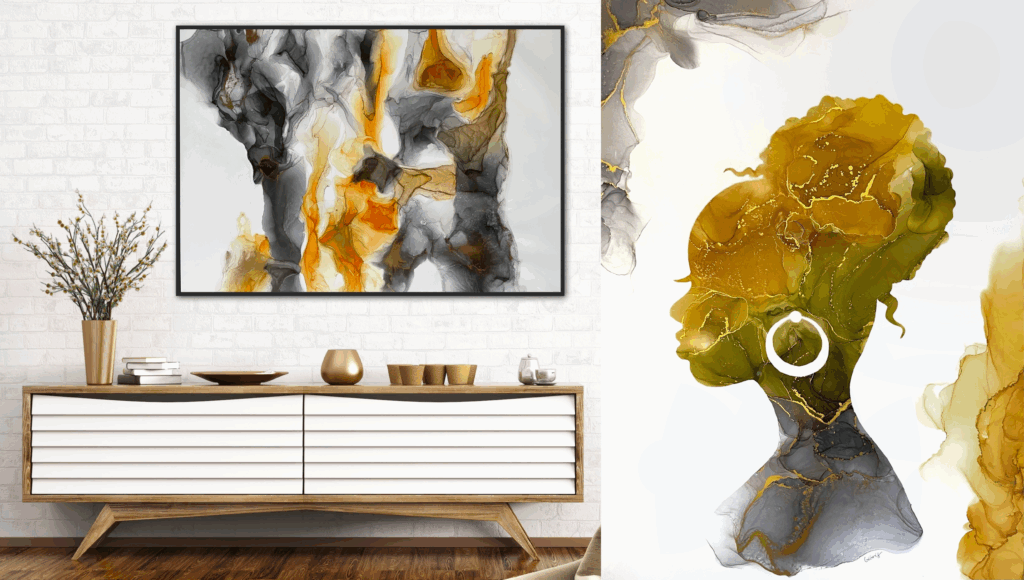Fine Art Shippers spoke with her about her artistic journey, personal traumas, and her interest in pre-Christian mythology.
Before turning to art, you worked as a brand strategist and therapist. What motivated you to start painting?
Ekaterina Solopova: It’s true, I came to art by a winding road. But art kind of runs in our family. My grandfather was an artist and educator in the Soviet Union, one of the early figures in exhibition design. But after he was repressed, his work ended up abroad under other names. My grandmother was an artist too.
As for me, as a child, I had an uneasy relationship with my parents. That’s why in my teens I was drawn to psychology, trying to understand myself. I even considered psychiatry as my future profession, but my parents, both in medicine, dismissed it.
So, after high school, I went to college to study advertising. I actually wanted to study design and packaging, but due to a mix-up, I landed in general advertising and unexpectedly loved it. I started working during university, moved up quickly, and was offered a leadership role before I even graduated. Later, I went freelance and considered launching my own agency, but eventually burned out.
That’s when I returned to psychology again, this time through neurocoaching and NLP. I practiced for several years and began to notice that many of my clients brought father-related trauma, which mirrored my own unresolved issues. I realized I needed to step back to avoid doing harm to myself or others. That moment became a turning point that eventually led me back to art.

Where are you at right now?
At this point, I do see myself as an artist. I feel I have something to say about the world we live in: how society functions, how it's shaped and influenced. I don’t think the fundamentals have changed much since the beginning of time. The tools of control and manipulation are still the same. That’s what I explore in my work. Art gives me a way to translate those ideas into a visual language and share them more broadly.
Right now, I’m focused on refining my technique in hyperrealism. I already have a strong conceptual base for the two series I’ve been developing: Novus Ordo Seclorum and Shadows of the Ancestors. Both examine the essence of power and freedom.
Could you talk more about these two series?
Novus Ordo Seclorum is a series of six paintings that explores depersonalization, manipulation, and the inner prisons we create or inherit. It presents society as a kind of performance, where power becomes theater and truth hides beneath layers of disguise. These works are meant to serve as a mirror, reflecting not just the system but the viewer’s place within it, as a victim, an actor, an observer, or even a predator.
Shadows of the Ancestors will consist of seven works and draws inspiration from ancient Rus mythology. The series is about opening a dialogue between past and present and uncovering the ways the ancient still echoes within us today. It poses a question: what if your legacy isn’t freedom, but the responsibility to remember what others have chosen to forget?
Why did you turn to ancient mythology? What draws you to it?
I’ve always been fascinated by the mythology of ancient Rus. There’s something powerful in how people once saw their gods. One painting I’m working on is The Vision of Perun. He’s the god of thunder, standing under a cracked sky, surrounded by lightning shaped like runes. He’s not a warrior here, but a presence. For me, he represents will and inner power. On a personal level, he’s also tied to my father, so the work blends myth with memory.
I also want to explore Mokosh, the earth goddess. Not as soft or nurturing as she often portrayed, but as a somewhat wild force. She emerges as both decaying and blooming as the land itself, where life and death are inseparable.

What artists resonate with you visually or conceptually?
Banksy has always been a major influence for me. I really connect with the sense of protest in his work and the way he communicates so directly through imagery. There’s a raw honesty to it that I’ve always admired. I’m also drawn to Jacek Yerka, the Polish surrealist. His work, filled with such detailed and multi-layered imaginative worlds, is simply stunning.
Could you tell us about your creative process? Do you start with an idea or a visual image?
It usually starts with an idea, something I feel compelled to explore or express. Once the concept is clear, visual images start forming in my mind. I think about how to communicate the meaning metaphorically, how to turn the idea into something symbolic or emotionally resonant.
From there, the process flows pretty naturally. I sit down and start sketching or writing, and things begin to take shape. I don’t usually spend too much time developing a single concept, because honestly, I have more ideas than I can keep up with. Sometimes I even draw from lyrics I’ve written. It’s a very intuitive process overall.
More artists are experimenting with neural networks today. What about you? Do you see them as a legitimate tool for artists?
I think they’re definitely here to stay, and like many artists, I’m open to using them as tools. We’re already seeing AI-generated works winning contests. For me, what really matters is how the technology is used. If AI supports and extends your creative vision, that’s great. But if you’re just generating prompts and copying whatever comes out, that’s not art at all. The real challenge is making sure the technology serves creativity, not the other way around.
Photo courtesy of Ekaterina Solopova
